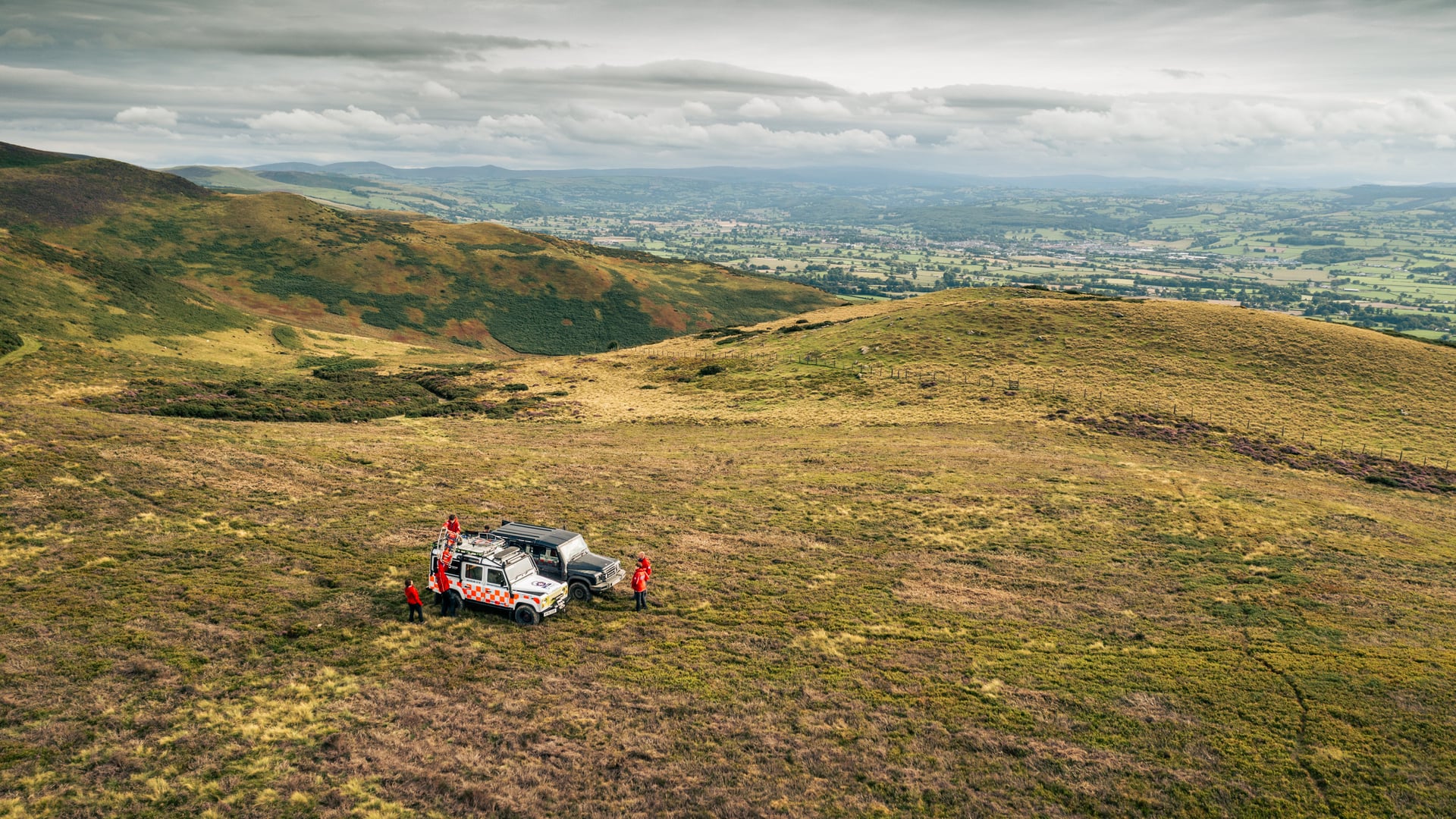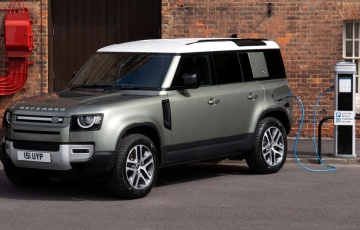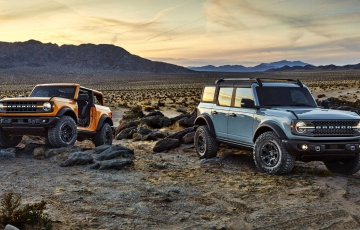Tough Mudder : Will Classic Land Rover Defender Owners welcome the new Ineos Grenadier?
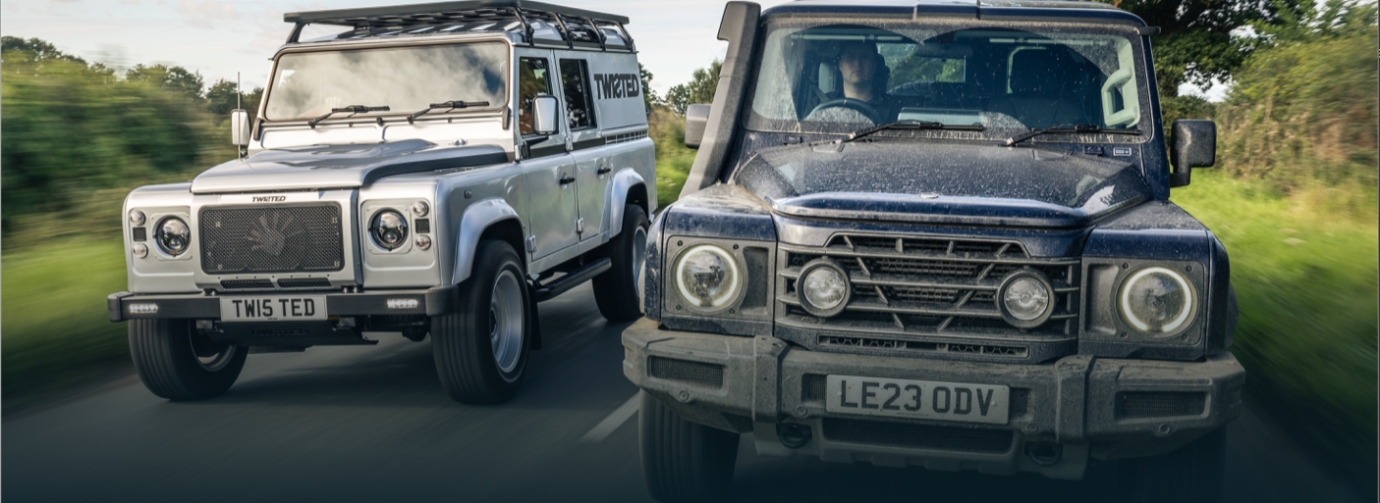
The new Land Rover Defender is a fantastic car. And yet, while the move upmarket may make it an ideal SUV for most people, there are still a select few who just can’t get onboard.
Some of those people might not want to get onboard, but others genuinely aren’t able to thanks to the price of entry (around S$500k for a 110) and the treatment that their old school workhorses receive.
So, what are all of these folk meant to do when their Defenders finally give up the ghost?
Well, that might just be where Ineos comes in. After trying and failing to buy the tooling for the old Defender, chemical magnate and extremely rich man Jim Ratcliffe decided that he would design and build his own take on the off-road icon.
Amazing what you can do with a little bit of initiative and a net worth of £29bn, isn’t it?
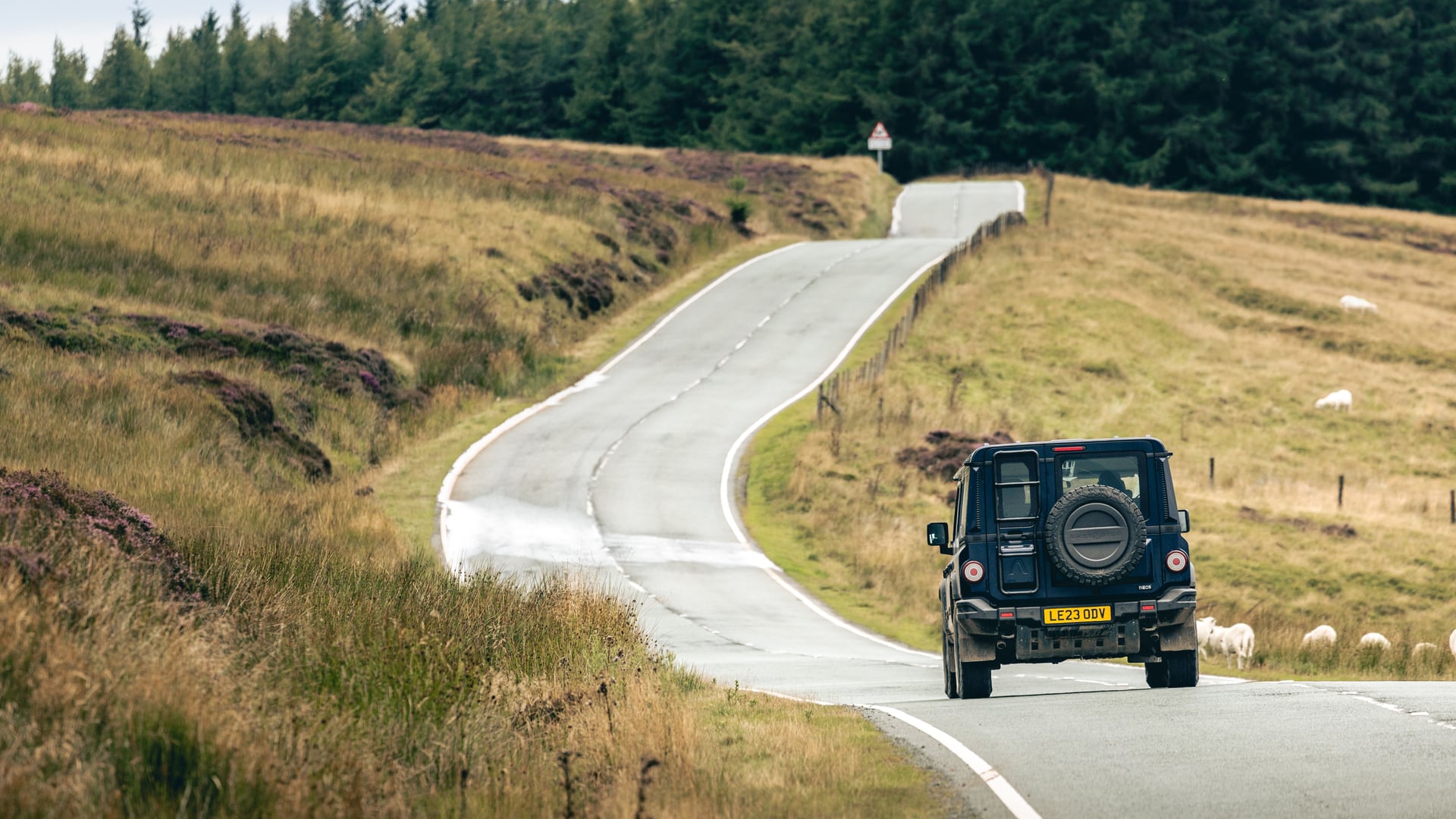
Anyway, the resulting 4x4 looks like AI tried to merge a Defender and a G-Wagen – hence why JLR took Ratcliffe to court over the design. It’s built in France (controversial given Jim’s stance in the EU referendum and original plans for a factory in Wales), sits on a retro ladder frame chassis with beam axles and uses straight-six BMW engines (a 3.0-litre turbodiesel or 3.0-litre turbo petrol).
Those are the basics, but rather than simply judge it ourselves, we decided to take the Grenadier to the people who still rely on those old Defenders. Those who think the new Defender is a Discovery in a dress.
Leaving London, it’s immediately obvious that the Grenadier won’t be threatening the Range Rover’s stranglehold on the local city car market any time soon.
Ineos settled on a recirculating ball hydraulic steering set-up, which gives it some of the feel of the old Defender and reduces kickback through the wheel when off-road, but it also leaves the Grenadier feeling remarkably vague on-road and the low-geared set-up means it’s 3.85 turns from lock to lock. That alone would keep you busy in town, but there’s no self-centring either so you do double the work.
Oh, and it has the turning circle of a large canal boat.
STORY Greg Potts
PHOTOS Jonny Fleetwood
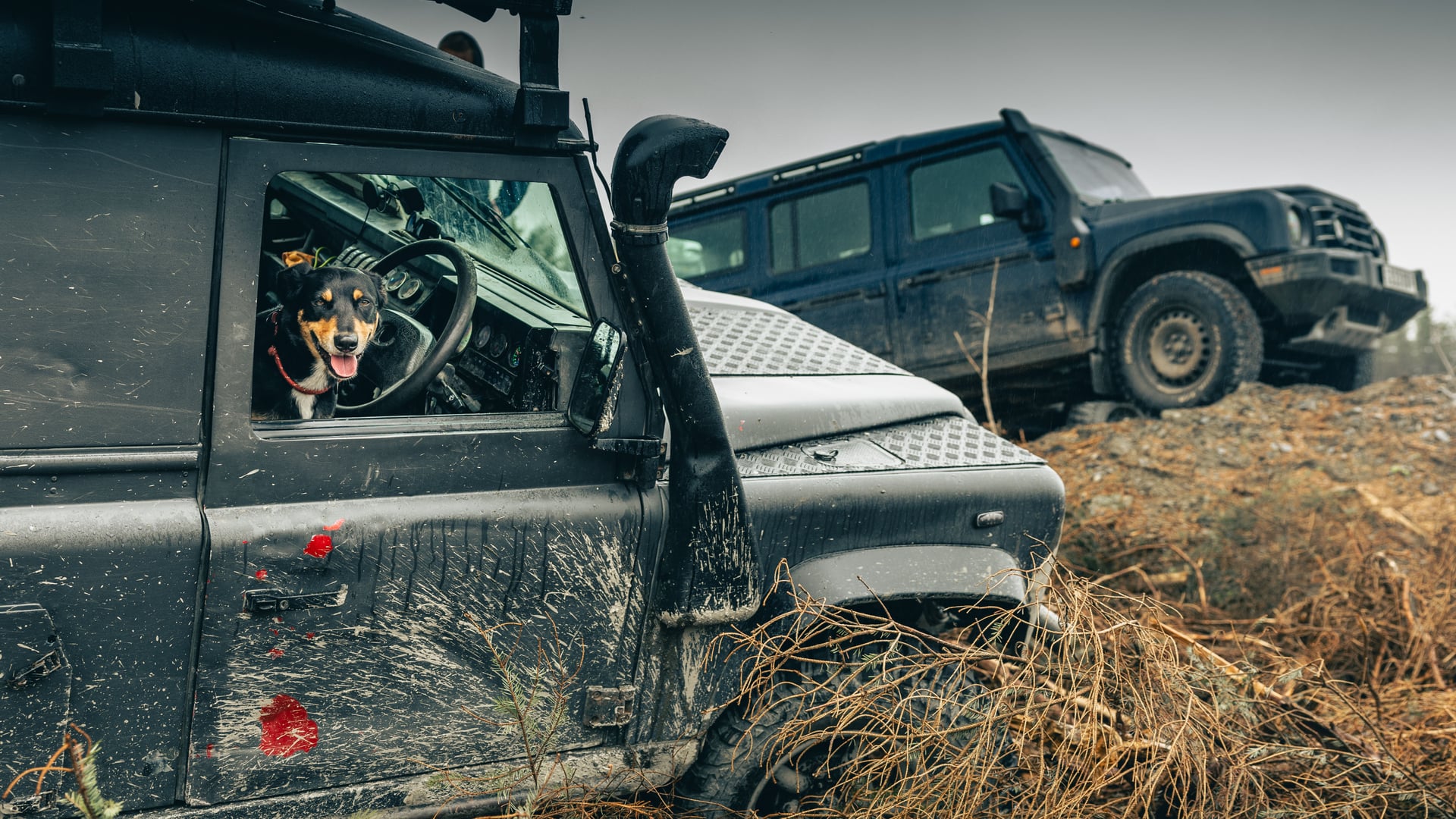

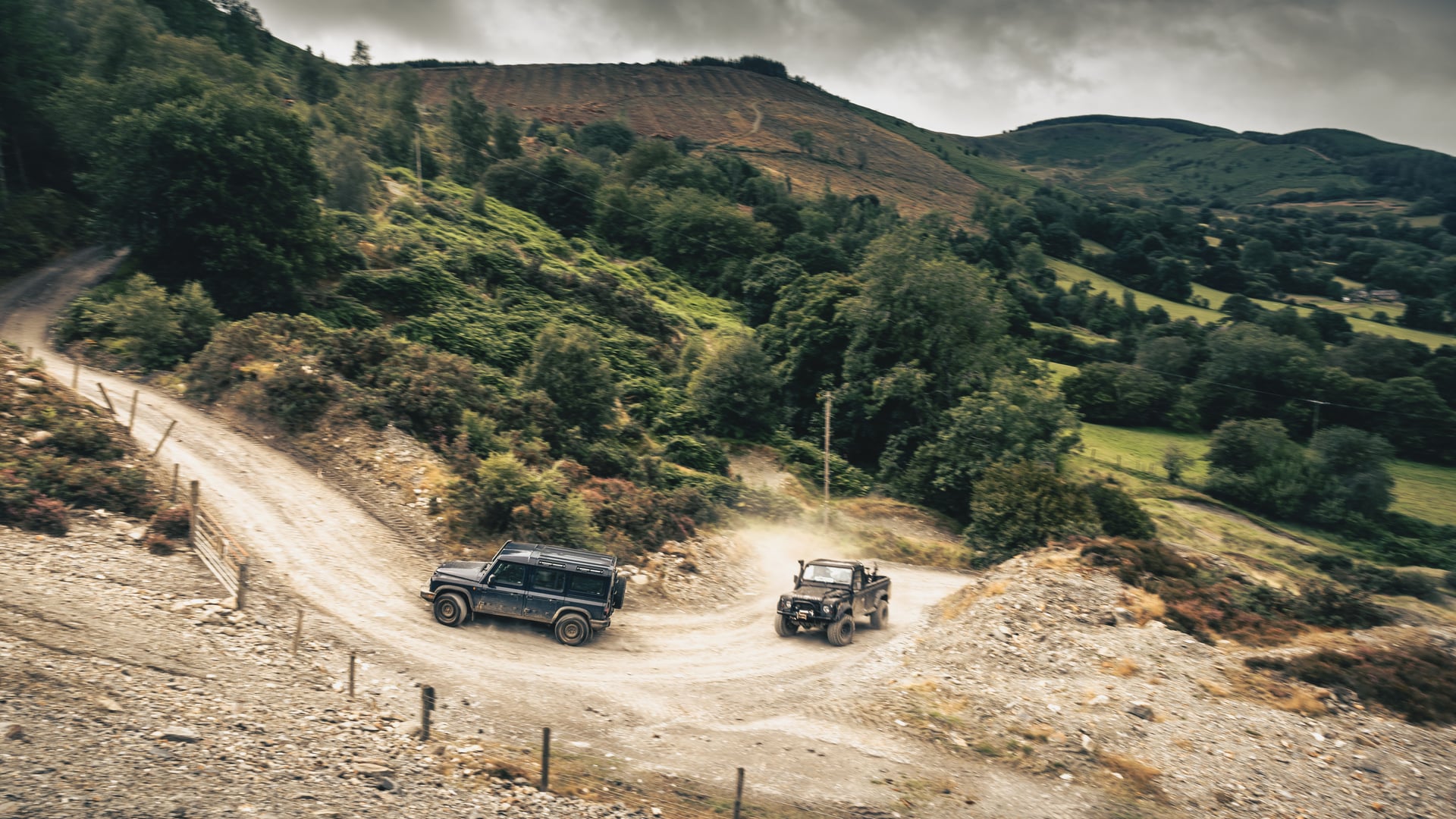
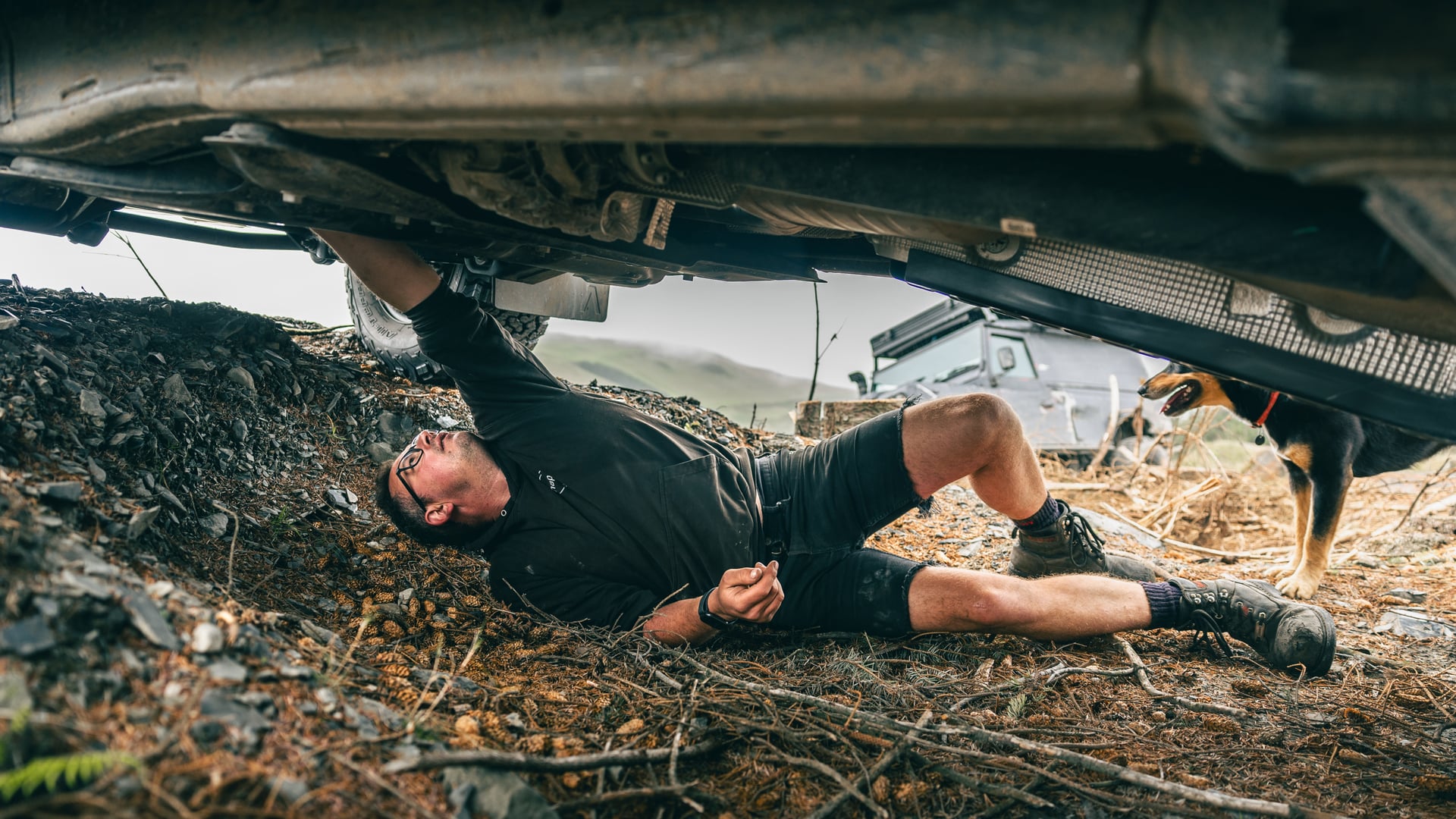
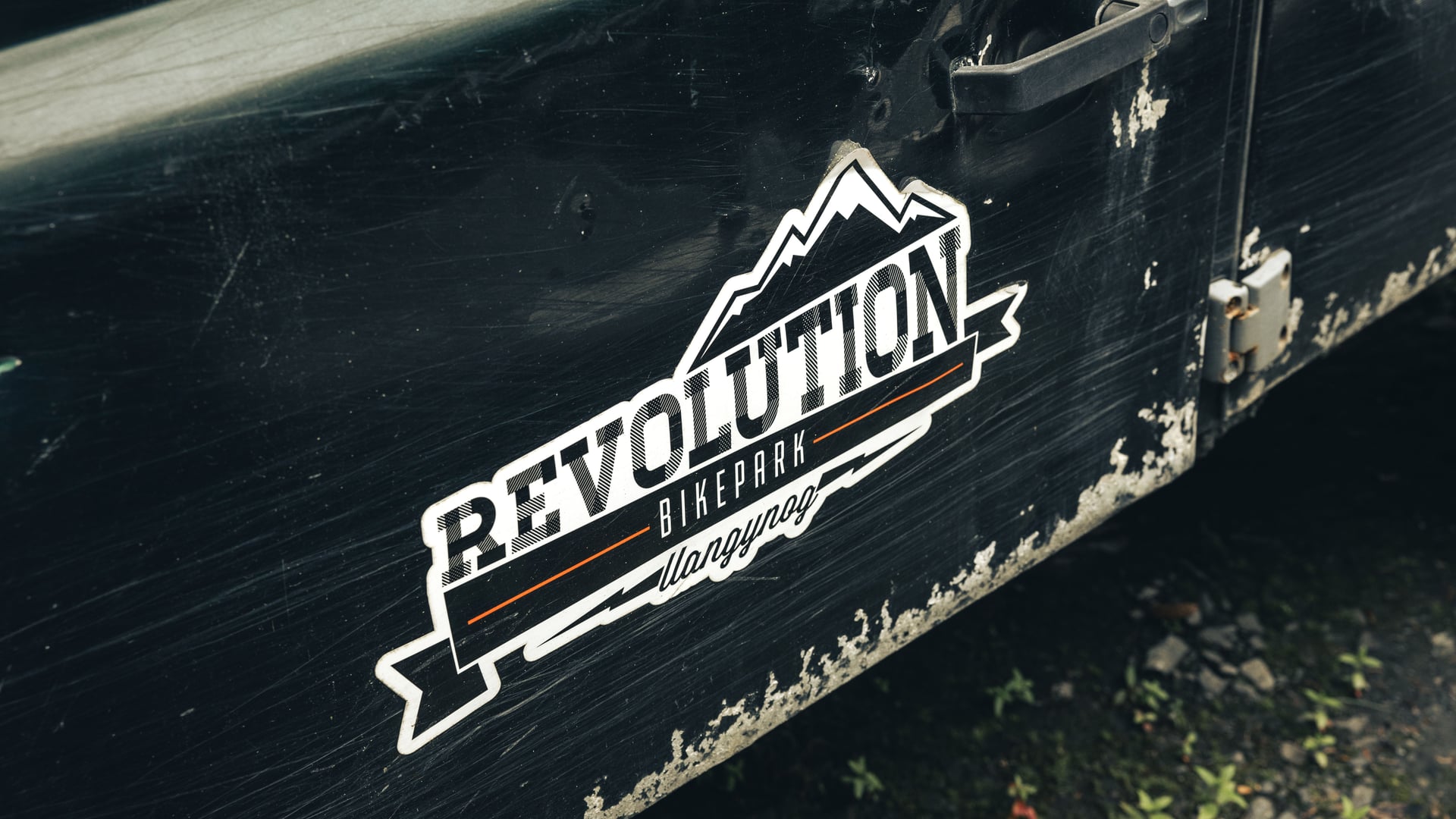
Thankfully we’re soon properly out of town and arriving at Revolution Bike Park in Llangynog in North Wales to meet co-owner James Foster and mechanic Lee Rann.
Ever since the park opened, they’ve used Defenders as uplift vehicles to bring bikers and their equipment to the top of a very big hill. At its peak, they owned 14 different Defenders and ran eight at a time.
Cruelly though, at the start of 2023 Revolution was forced to close thanks to a disease affecting a small number of trees in the forest. As a result, every single one has to come down. The old uplift tracks are littered with logging machinery.
There might not be any work to do, but these two lifted creations are still well used as recreational off-roaders. Lee’s 110 Hard Top has been to Morocco and back and has been stuck in every manner possible during its time. Perhaps it’s no surprise when it almost immediately beaches itself on a tree stump, then.
After some rocking back and forward there’s a loud snap and suddenly it’s a front-wheel-drive Land Rover. Less than ideal, although like most off-road enthusiasts in this situation, Lee is delighted. Plus, the interlude gives us time to poke around underneath the pretender.
“It looks strong in the right places,” says Lee of the Grenadier’s chassis. “The sump guard at the front is just a piece of tin though. The equivalent on mine is 6mm thick steel. There’s so much flimsy plastic under here too.”
It’s not all bad news, the powertrain comes in for some praise and Lee reckons the aftermarket parts scene could take off as it has done with the Defender.
“Obviously, Ineos has had to put on the big bumpers and anyone that’s into this game will rip those off and add other bits, but it’s expensive in the first place so you’re already in deep. Defenders range from £5,000 up to six figures, but it’s the ones at the lower end that are bought and modified.”
Spoiler alert, cost is set to be a recurring theme throughout our Grenadier mission. The Station Wagon starts at £76,000 now that you can only choose between the off-roady Trialmaster or ‘lifestyle’ spec Fieldmaster. This particular car sits closer to £80,000 with its Britannia Blue paint and leather interior. Yikes.
At Revolution the cars they were buying cost between £3,500 and £8,000, but all received new suspension, new bushes and new brakes before being put to work.
“It doesn’t matter what you spend below £15,000, you’re going to have to do all of that anyway,” explains Lee. “We used to get 10 people in a County with 10 bikes on a trailer. They dragged that weight up the hill at 25km/h and would do it all day long. There’s nothing out there now that will do that. Actually, the Grenadier probably would do that with slightly fewer people in it, but do you want to do that in an £80,000 car?”
As niche as it may seem, it’s a dilemma that is genuinely being faced today, because James and his brother Tim are currently helping to set up a similar park in Scotland. They are yet to find a better option for this rather specific use case. And yeah, it’s unlikely to be a fleet of Grenadiers.
Before we’ve even reached our next destination, Lee’s 110 is back to sending all of its 110hp (ish) to four wheels. Will the Grenadier ever be as easy to work on with its fancy BMW and ZF oily bits? Time will tell.
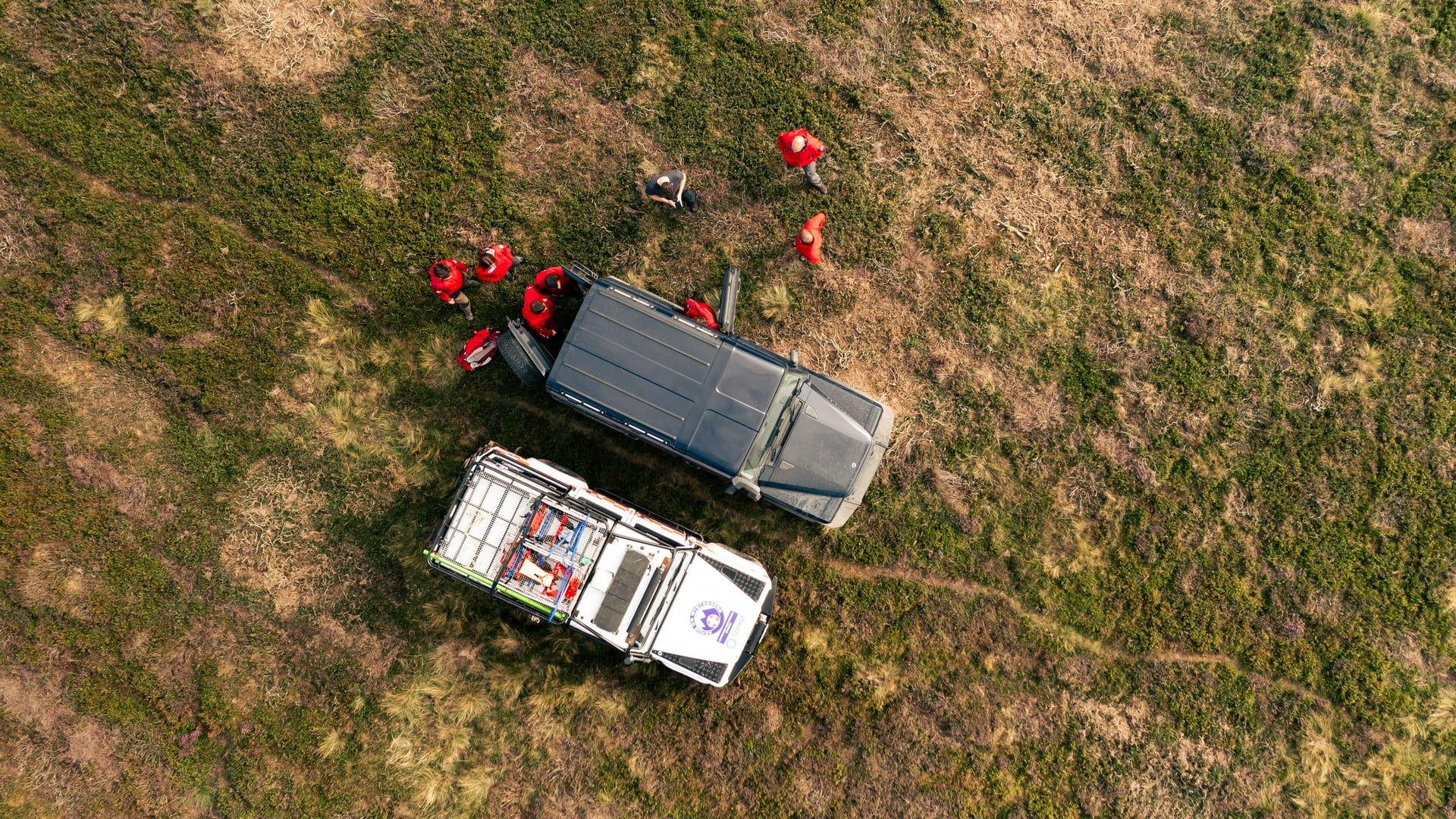
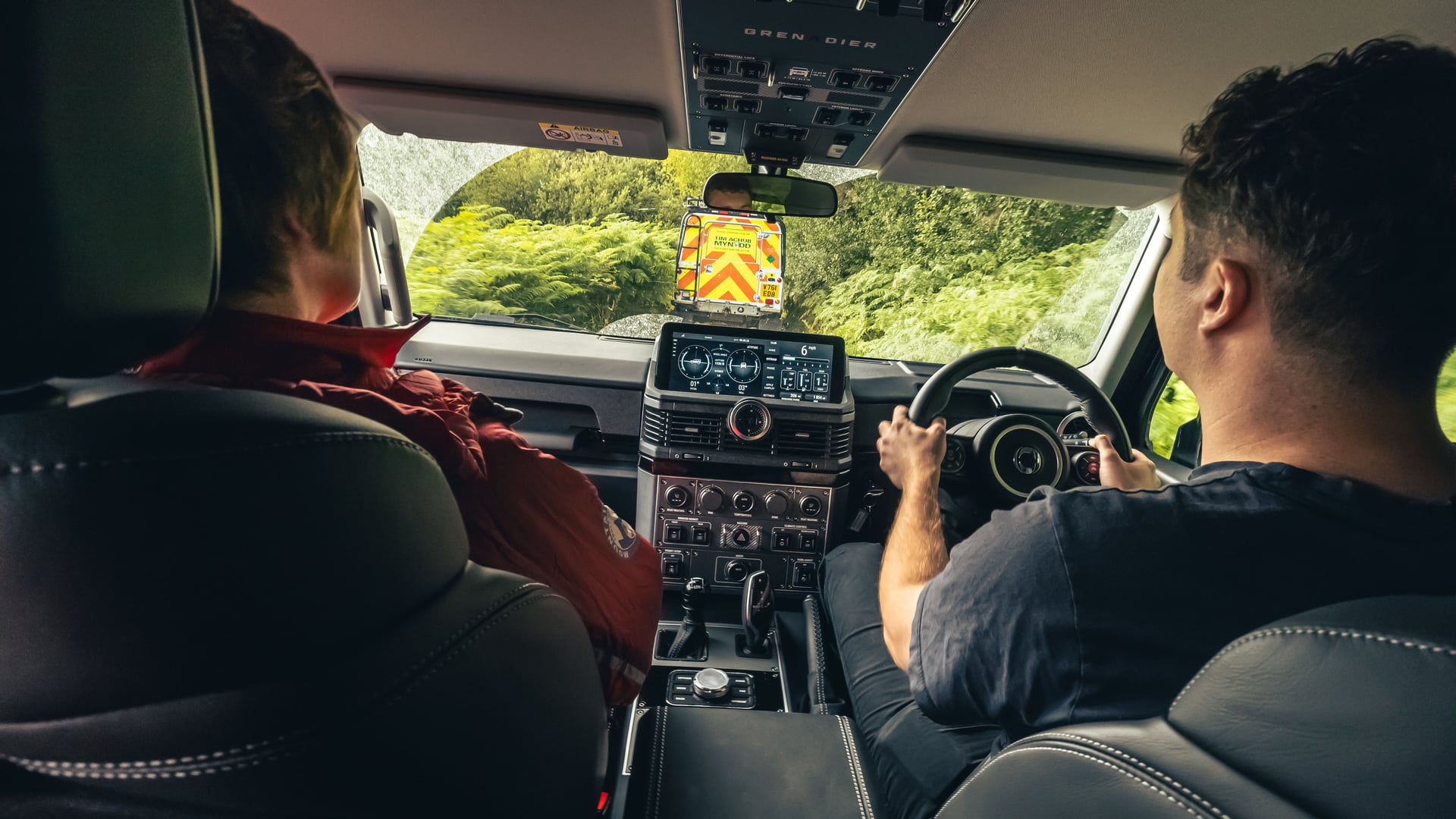
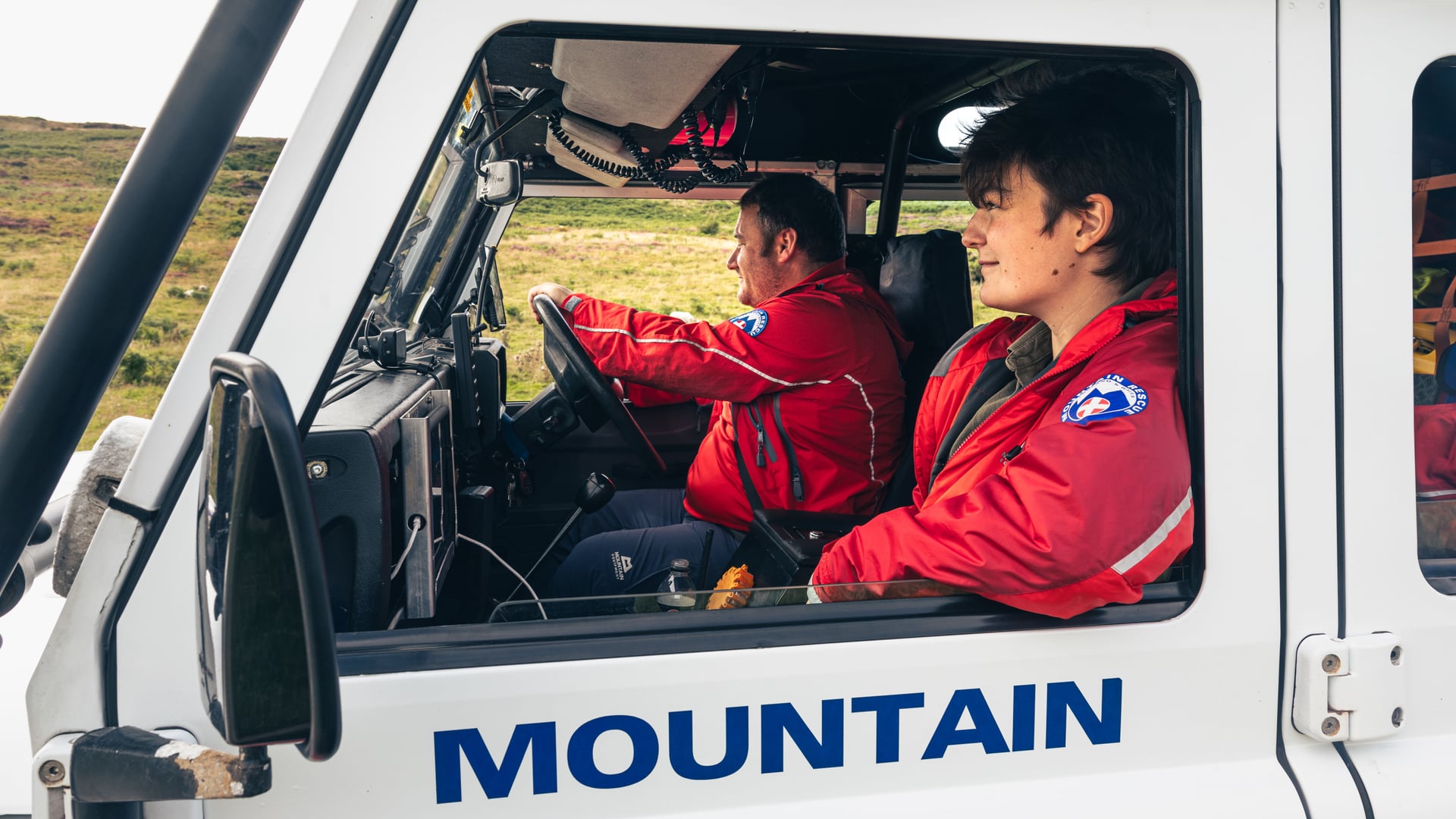
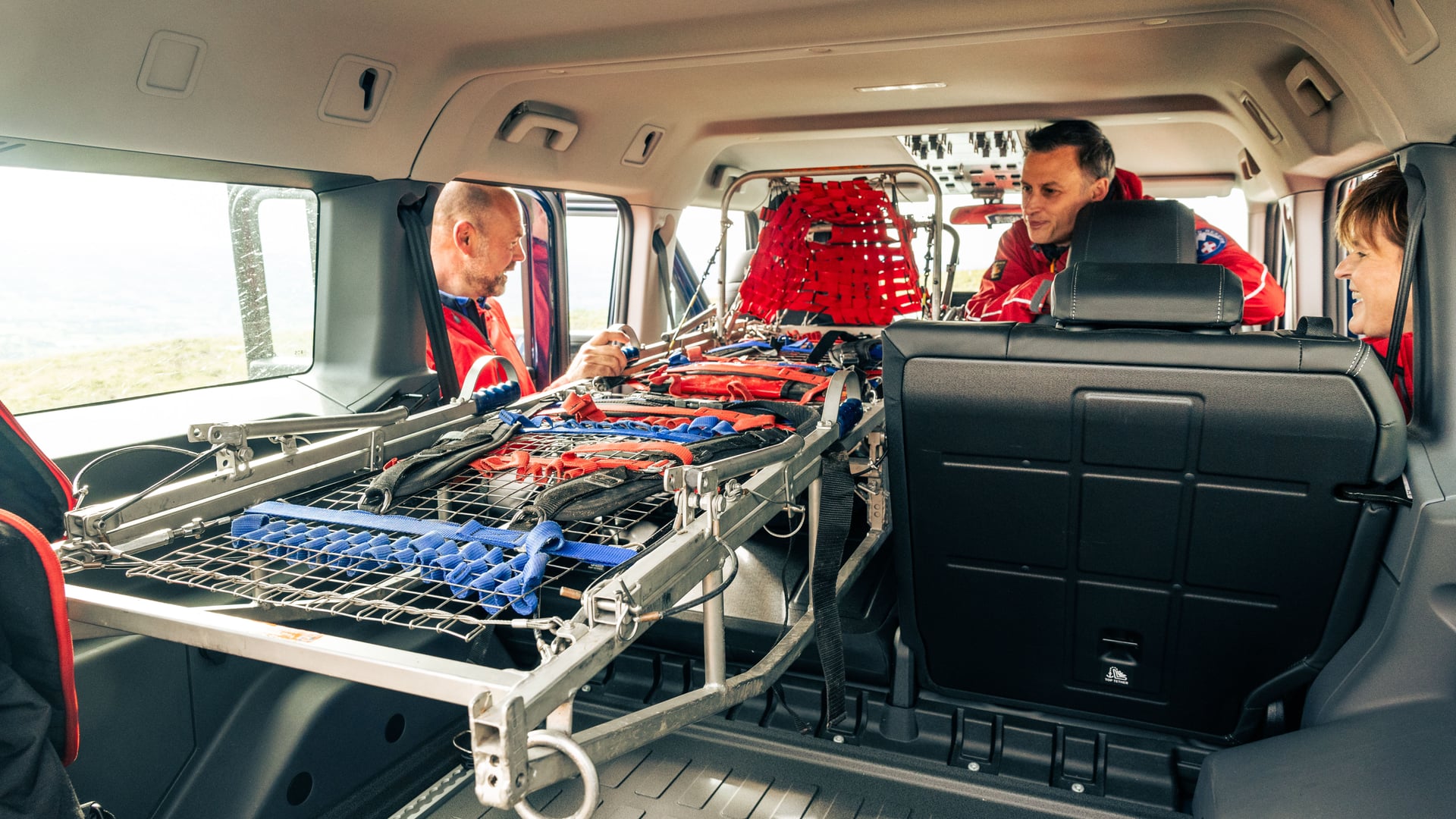

Our next stop requires yet more climbing. Mountain Rescue teams across the UK are currently replacing the Defenders they have used for years, but there’s no consensus on a perfect replacement for the varied and difficult to reach work that the volunteers do.
North East Wales Mountain Rescue is still running two 2000 Td5 Defender 110s that it purchased secondhand from the Bolton team seven years ago, but would the Grenadier work for them?
Most important is the stretcher test. The Grenadier’s rear seats don’t fold fully flat, so a special bracket would be needed to accommodate a casualty, but impressively the stretcher does fit and the team members are rather taken by the access provided by the double rear doors.
Wipers that clear the windscreen (mostly – an annoying section is left unwiped in right-hand-drive examples), a watertight cabin and headlights that actually light the way are also wins for the Grenadier over the old Td5s, and the external connectors for auxiliary lighting would speed up the conversion process by allowing the flashing blues and spotlights to be plugged straight in.
There are worries about how well the interior would hold up, although a vomit-proof wipe clean floor is a bonus. The sheer weight of the Grenadier could be a bigger issue given that it's touching 2.8 tonnes unladen with the heavier 246bhp diesel engine up front. Add in the necessary roll cage, radio equipment and 400kg of kit that the team carries with it and you're looking at needing a C1 licence to drive the thing.
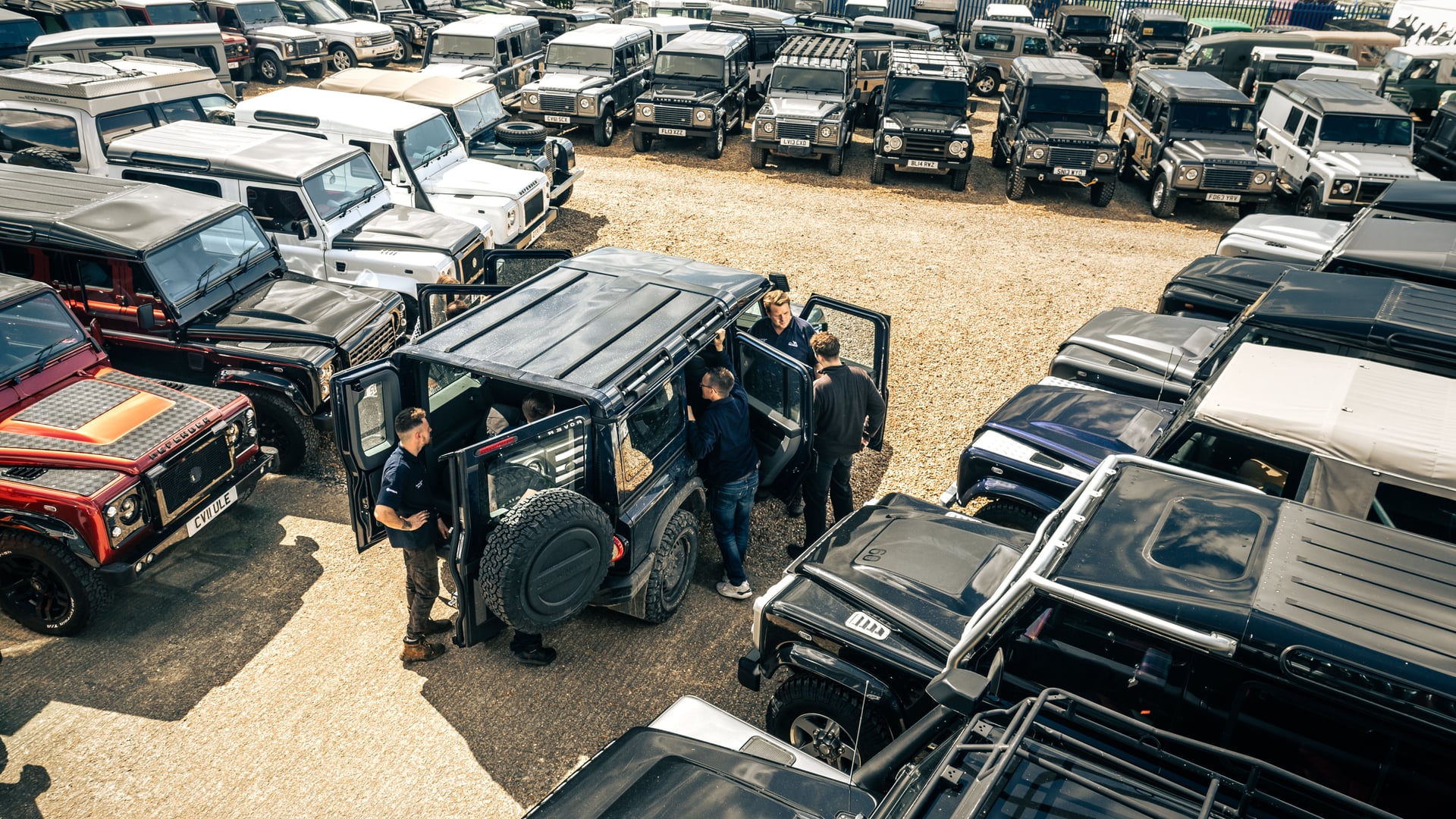
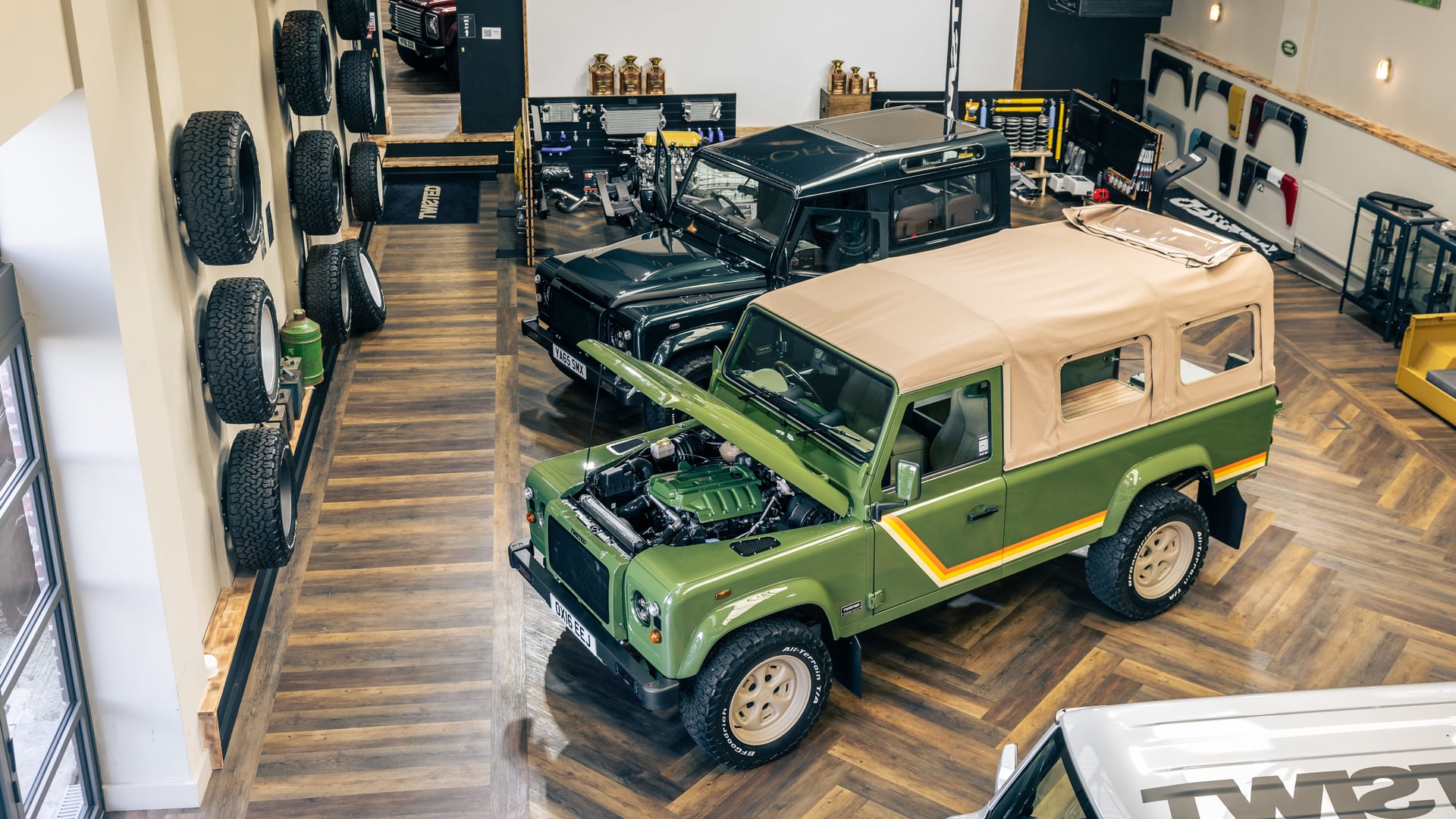
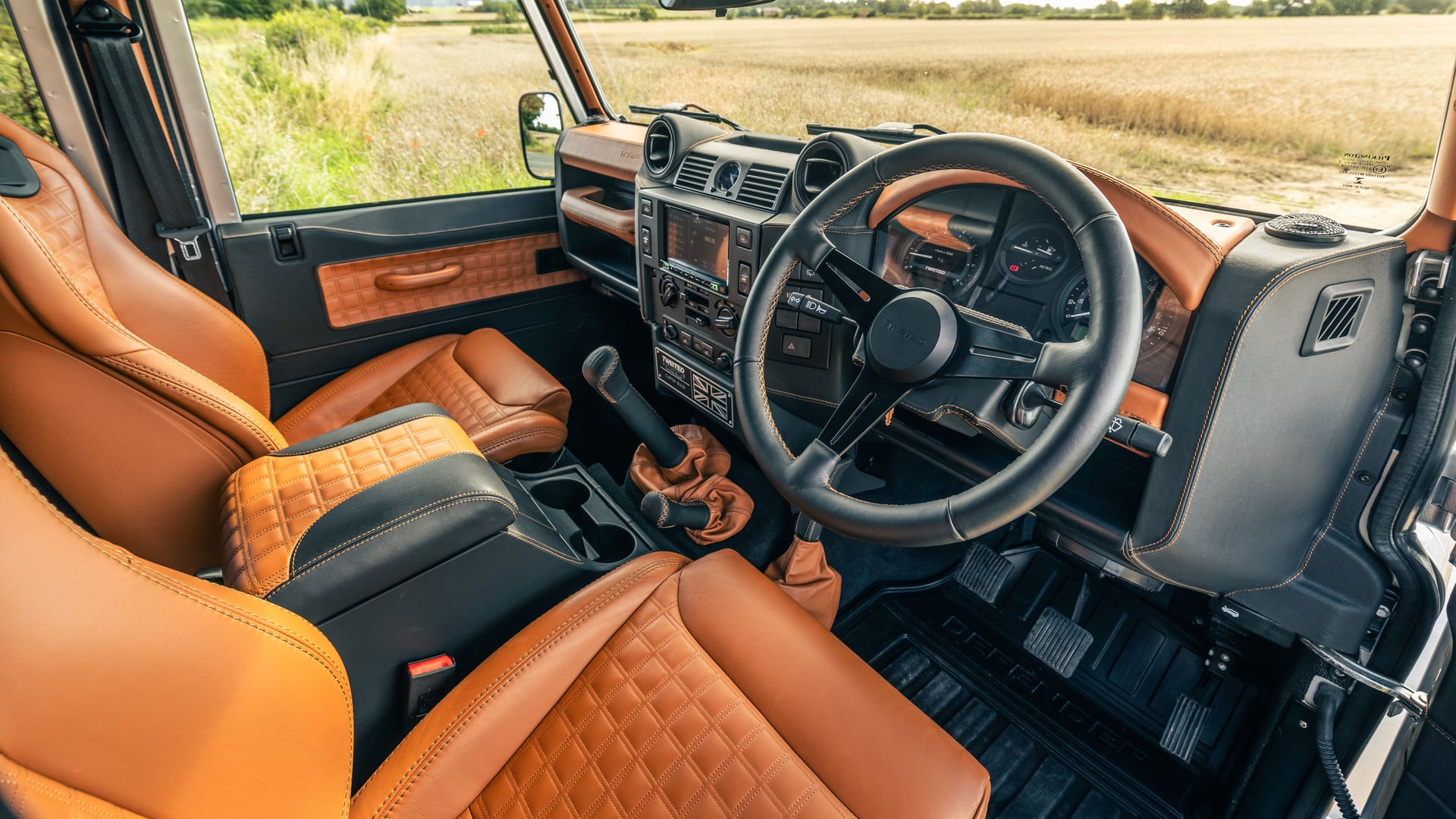
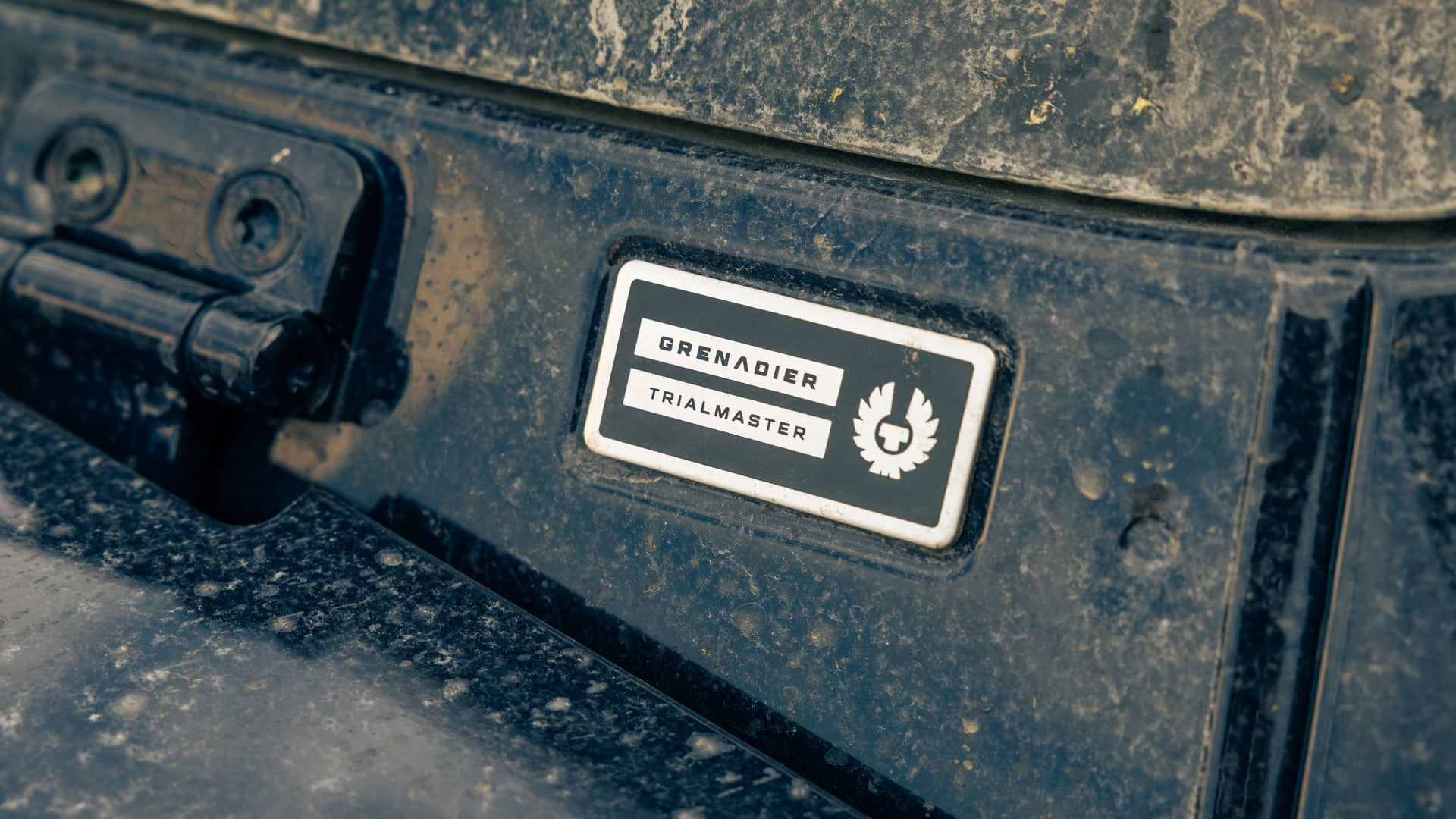
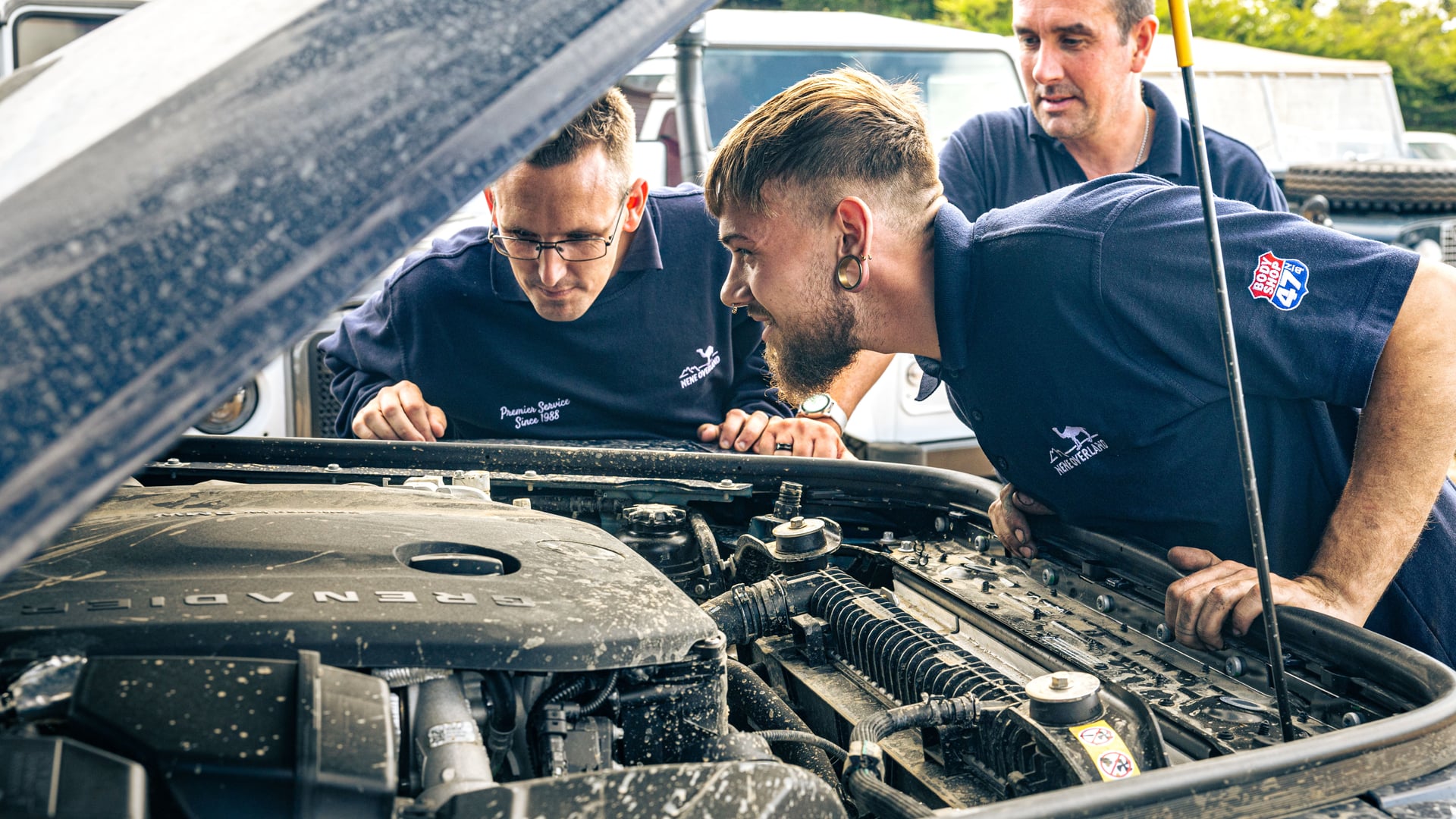
Towards the end of its life the Defender also became a hit with tuners like Twisted, so we make our way over to North Yorkshire to meet boss Charles Fawcett. When Land Rover announced the end of the Defender, Charles bought over 200 last of the line examples to see his business through for years to come.
"Loads of people have asked when we're going to start modifying the Grenadier," says Charles. "But what would we do? OK, it looks rubbish, but they've already done everything else they can on it. I never want to modify for the sake of modifying, I want to make something better. That's why we haven't done the new Defender - everybody else has done it and they just make something slightly different to standard."
And hence why the brilliant T110 TVS we’re in today is specced to £186,000 and comes complete with a turbocharged 4cyl Ford engine. There’s also bucket seats, an impressive leather/Alcantara interior and modern infotainment, so it’s posher inside than the Grenadier and yet still remains more agricultural to drive.
The familiar engine sounds purposefully gruff here and the 6spd manual gearbox has a long throw. The seating position is classic Defender too with the throttle pedal so far off to the right it’s almost out the door. Then again, RHD Grenadiers don’t fare much better with the exhaust leaving you with no flat rest for your left foot.
The diesel Grenadier will do 0–100km/h in 9.8 seconds and with 550Nm of torque on tap it feels punchier. You feel the extra tonne of weight over the Twisted as you brake for corners and it does seem to get worryingly warm sat at motorway speeds, but it’s quieter in the cabin than the poshed-up Defender.
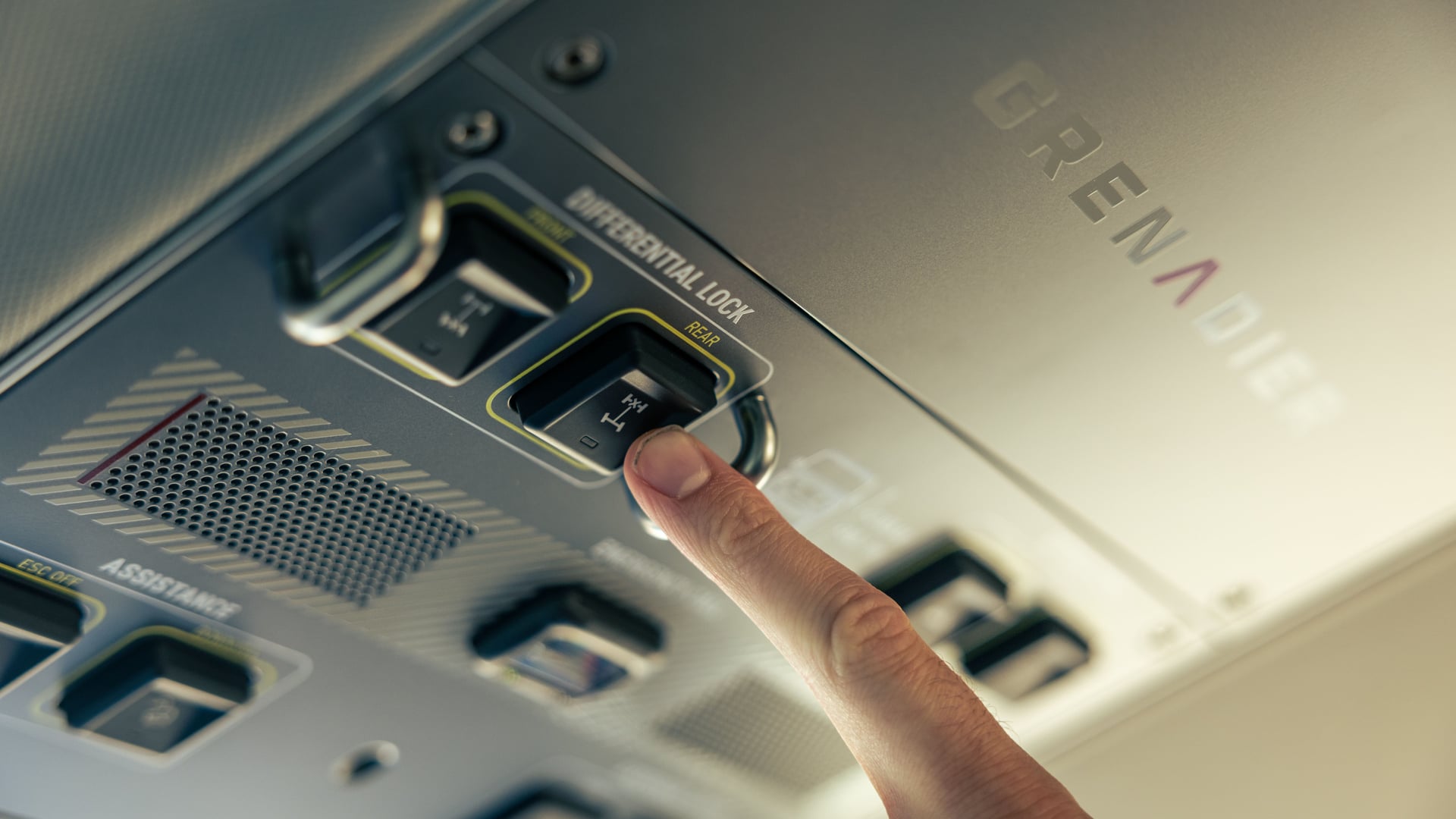
A monotonous drive down the A1 is perhaps easier than it would have been in the Defender too, with the Ineos’ cruise control and smooth auto gearbox making life simple. And when we arrive at Nene Overland, we’re greeted with yet another Land Rover toy box. There are V8s everywhere, but I’m more interested in the campervan conversions that are more popular than ever.
Like moths to a very boxy flame, we’re joined by a group of Nene’s technicians who pick apart the interior and find joy in the roof- mounted switches. It might be gimmicky, but who doesn’t want to play at being a fighter pilot?
Those might well be an issue if you want to convert your Grenadier into a camper though. Service manager Bob Webb runs us through the process that in a Defender involves simply unbolting the roof to fit a pop-top tent that serves as the bedroom.
In the Grenadier you’d need to be brave with a saw and chop it completely off. What you would do with the locking diff buttons after that is anyone’s guess.
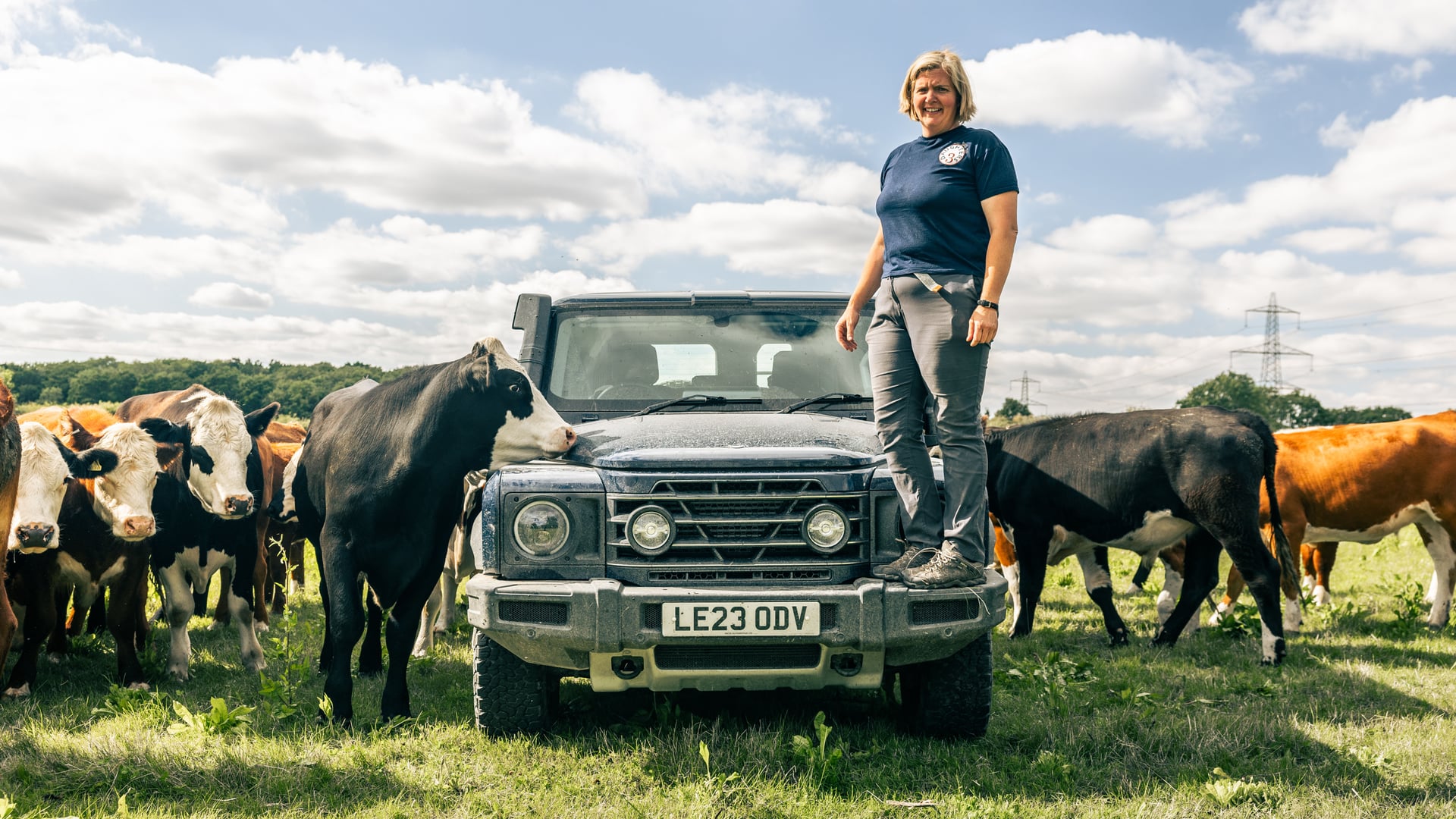
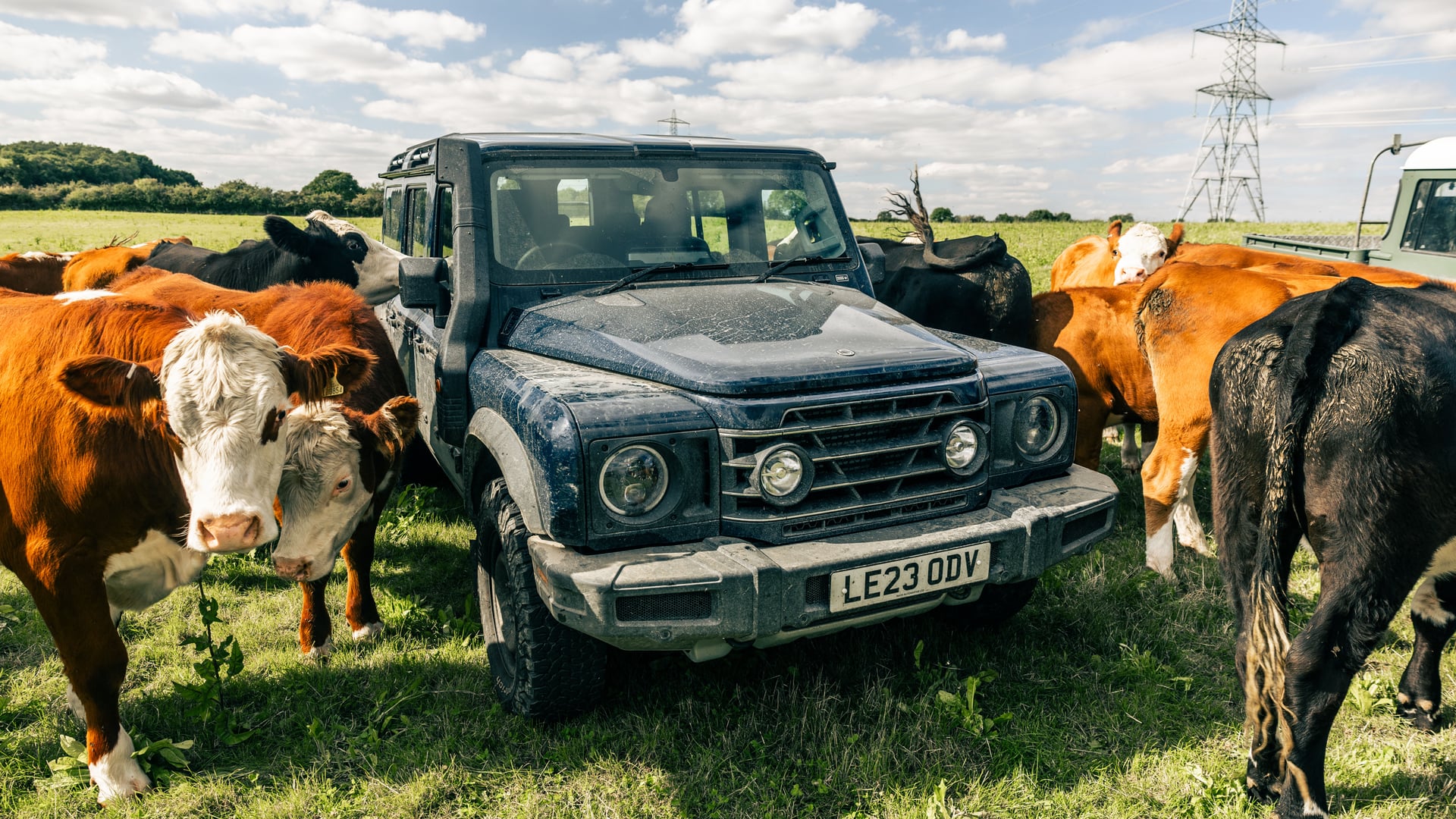
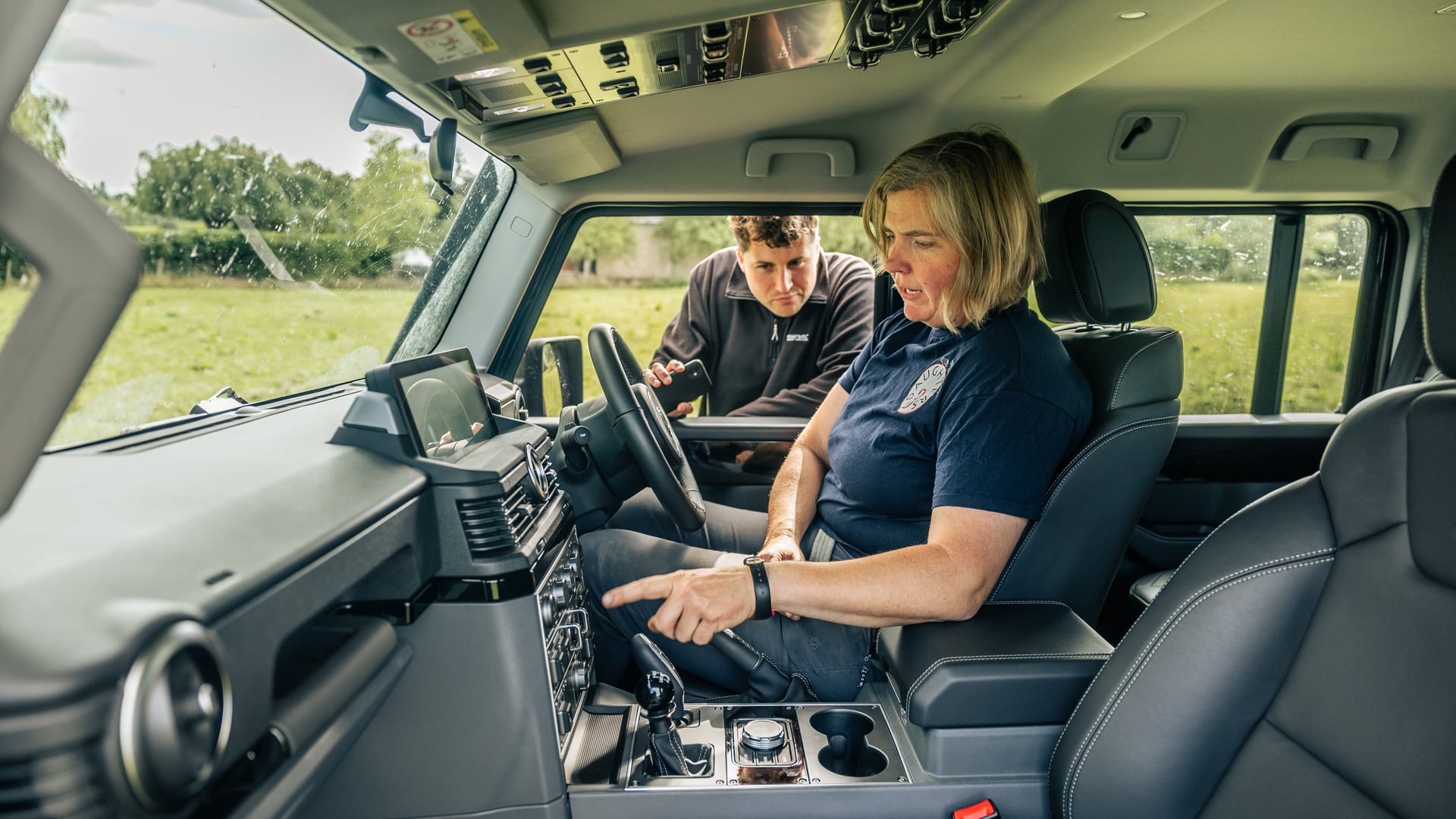
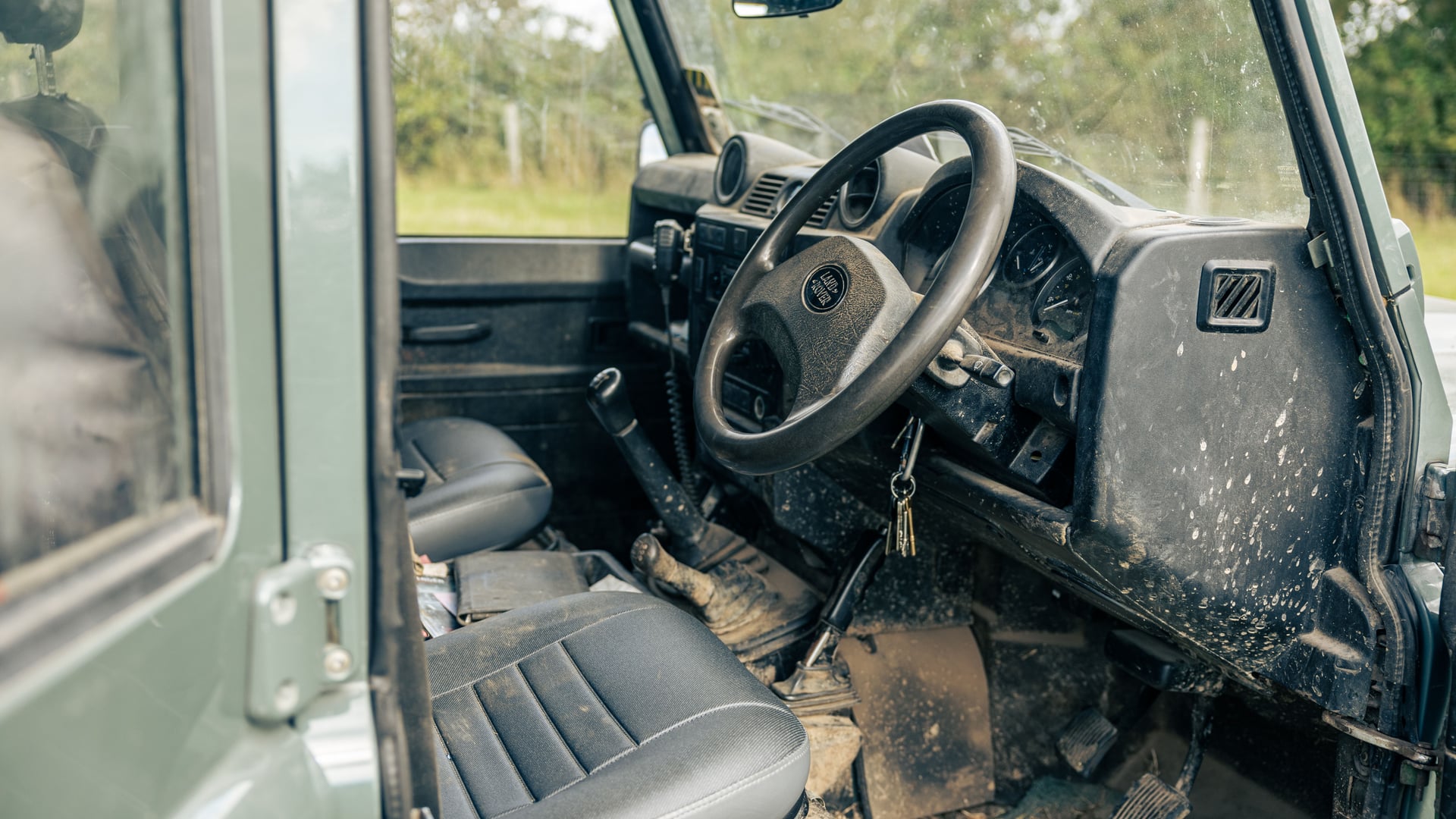
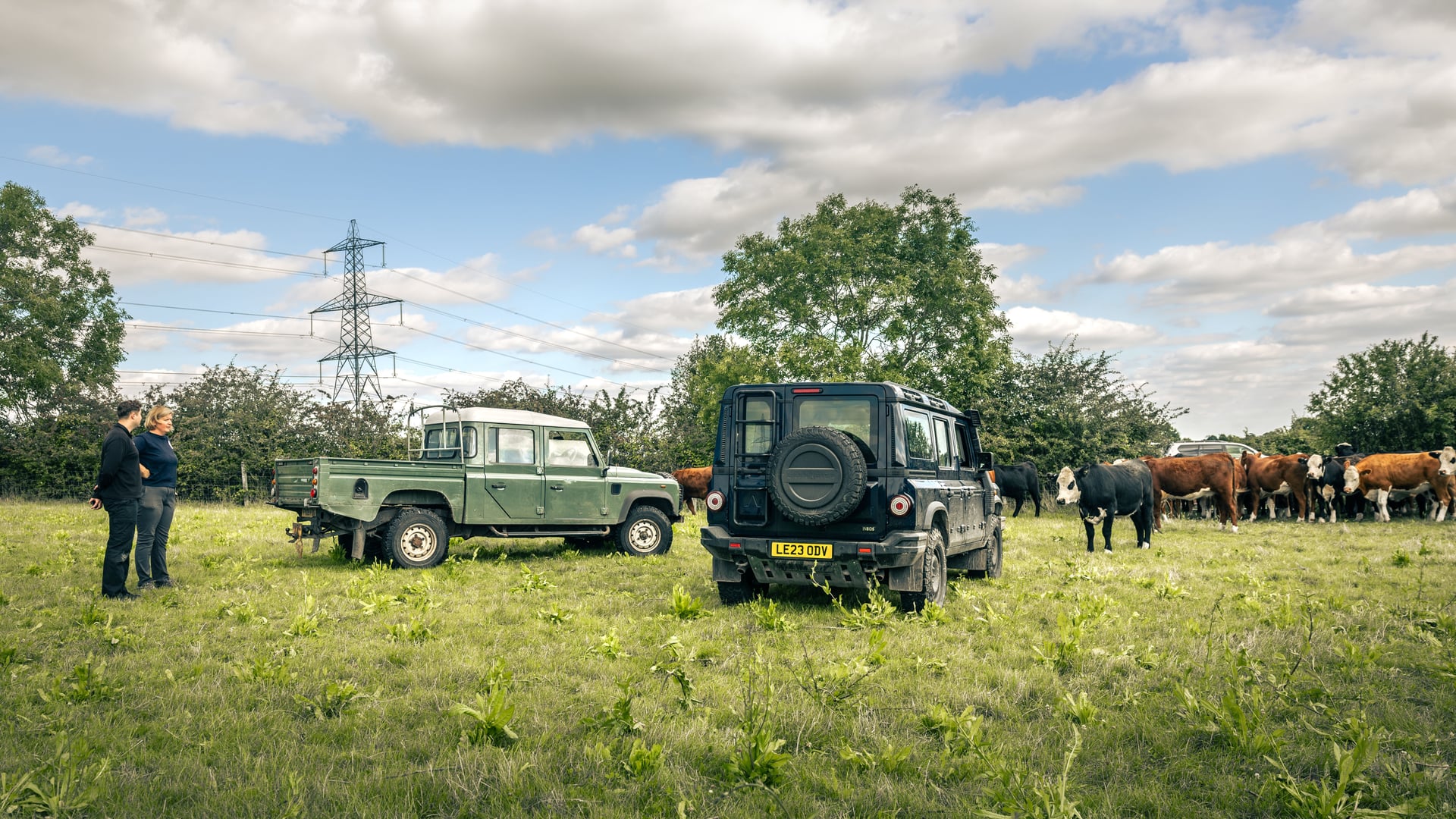
And so, it’s on to the final test. The boss level – farming. The 3 Daughters @ Croft Farm in Uffington is run by (you guessed it) three sisters, with the family workhorse a 2009 130 Double Cab pickup. It has 110,000 hard miles on the clock and spends most of its life either off-road or towing, as the farm mixes animals, arable and events.
Liz Genever takes us out into the field to see what the livestock makes of Ineos’ handiwork. There are almost 40 very interested cows around and each is worth around £1,500, so combined they’re getting close to the value of the entry level two-seat Grenadier Utility Wagon.
And yet, it’s the lack of proper utilitarianism that lets the newbie down here. “It does feel a bit like I’d ruin it,” says Liz. “If you look in the Defender it’s a lot more basic from the factory. There’s less to go wrong.”
Most of the feedback we’ve had is that the Grenadier probably won’t work from new for those looking to replace their old commercial spec Defenders. It’s too expensive (more so than a new Defender even), too heavy, too flimsy in places and too posh inside. I worry that leaves it without a big enough target market given that it’s not exactly going to be king of the Chelsea tractors on-road either.
Subjectively though, and probably because I didn’t have to buy it, I’ve grown rather fond of the Grenadier.
It may have been ridiculously thirsty with an average of around 14.1l/100km, the air conditioning may have a mind of its own and there may have been a few teething problems with the screen in this late prototype (it’s laggy and once decided to move the speedo and rev counter over to the left-hand side so that it covered the Apple CarPlay display), but it coped with everything we could throw at it and was surprisingly comfortable at the same time. Why is it that we all seem to fall for the most flawed vehicles?
